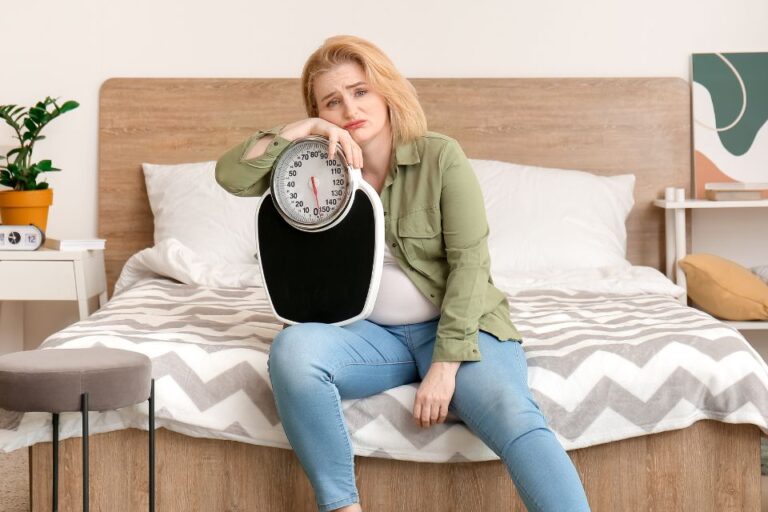Lose That Belly Fat TODAY!
As everyone knows, whether they’re at their goal weight or not, there are areas that need a little extra work, and belly fat is usually number one on that list. It is also the unhealthiest place to store it. Here, we give you some tips on how to achieve your goal body and weight.
Location, Location, Location
People store fat in two ways: one you can see under the skin (subcutaneous) and one that is stored around vital organs, called visceral fat. Visceral fat is most dangerous to your health, and it is seen in people with wide waist sizes.
For a minimal effect on health, men should have a waist size of 40 inches and women 35 inches. Therefore, losing fat around this area can benefit both your appearance and health, as having an ‘apple-shaped’ body is actually not healthy at all.
Get Moving
Even thin people can have visceral fat, and some people have a genetic tendency to store it. Visceral fat likes inactivity, so the message is to get active, no matter your size. It is a common assumption that crunches are the best way to get toned abs, and while these exercises build strong muscles, you might not see them under belly fat.
Moderate activity, which raises your heart rate for 30 minutes at least three times a week, helps slow down the amount of visceral fat you gain, but to burn the fat, you need to step up your workouts.
Half an hour of aerobic exercise four times a week is perfect, plus resistance training and core-strengthening exercises such as Pilates.
It is also important to incorporate exercise into your life by taking at least 10,000 steps each day. In one study, participants reduced their daily steps from 10,000 to 1,500 without making any dietary changes, and their visceral fat increased by 7% after just two weeks.
You should always take the stairs instead of the elevator, walk rather than drive when possible, and park at the edge of the parking lot if you do take the car.
Fight Fat with Food
A fiber-rich diet has been shown to help avoid belly fat; a study where people ate 10 grams of soluble fiber each day (equivalent to a cup of green peas) but made no other changes to their diet built up less visceral fat over time.
The soluble fiber found in foods such as apples, cherries, and oats lowers insulin levels, which in turn can speed up the burning of belly fat. However, you must eat the skin, as that’s where all the fiber is.
Sugar is your number one enemy if you want to lose belly fat, as increased insulin levels result in fat being stored around your middle. A great tip to beat a sugar craving is to sprinkle cinnamon on your morning cereal. The spice has been shown to help stabilize blood sugar and suppress your appetite.
You should also avoid simple carbohydrates, such as white grains, which contain sugar, and opt for whole grains, as they aid the melting of the hidden visceral fat.
In addition to their heart-healthy benefits, monounsaturated fatty acids (MUFAs) may stop belly fat before it starts. Great MUFA-rich foods are olive oil, salmon, avocados, nuts and seeds.
However, you should avoid all trans-fats, as these are the bad fats which distribute fat around your midsection, so step away from margarines, cookies and cakes, and anything made with partially hydrogenated oils.
The antioxidants found in green tea also help to burn fat cells, so aim to drink two to four cups daily to get the ideal amount of these helpful antioxidants. Low-fat dairy and the calcium it provides also help to burn fat, and lean meat, berries, beans, eggs, and reduced-sugar dark chocolate have all been shown to aid the fight against belly fat
Lean Lifestyle
We start to gain belly fat when our cortisol levels spike and the main culprit for high levels of cortisol is stress. Cortisol breaks down lean muscle (the type of tissue that helps burn calories more efficiently) and holds onto fat stores in the abdominal region, so the stress caused by dieting can actually have an adverse effect on your attempts to lose weight, even with calorie restriction.
One way to alleviate stress is to get plenty of sleep, ideally seven or eight hours each night. Losing sleep can alter your cortisol levels and insulin sensitivity so you have a great reason to stay in bed a little longer.
You should also keep your stressors away from your bedroom and reserve your sleeping area solely for rest and relaxation. Vitamin D counteracts the secretion of cortisol, plus it gives you more energy, so you feel like working out.
The best source of vitamin D is the sun, so get outside and feel the rays for at least 15 minutes each day. Vitamin C also helps balance cortisol spikes and is essential for making carnitine, a compound used by the body to turn fat into fuel.
So, if you’re going through an emotional crisis, try eating kiwi fruit and bell peppers, as these have even more vitamin C than oranges.







